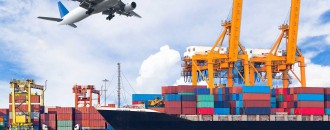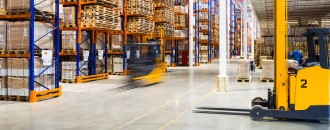
Goods & Services Tax a booster dose for 'Make in India' campaign
The Dollar Business Bureau  It seems the stage is set for the introduction of Goods and Services Tax (GST) by the next financial year. As the Union Finance Minister, Arun Jaitley said that there is a consensus among state governments on the issue, those involved in manufacturing and exports of goods and services are upbeat that the new regime will boost global trade. According to experts, the comprehensive tax regime - aimed at replacing central excise, VAT, entertainment tax, octroi and purchase tax on goods and services - is expected to boost the country’s economic growth up to 2% by removing restrictions at state level on various transactions. The Finance Minister on Wednesday said that a constitution amendment bill for the introduction of GST will be passed in the current session of Parliament. Talking to reporters after a meeting with representatives of 18 states on the issue, Jaitley expressed hope that the new regime will create a unified market across the country from April 1, 2016. The main objective behind the implementation of the GST is to make country a unified market with lesser number of taxes, enabling companies to invest more and add to the country’s GDP. The proposed bill is expected to clarify state’s apprehensions on the modalities of tax calculation and rebates given to export-oriented units. Manufacturing industries hope that the bill will remove inverted duty structure, which is a major hurdle in the way of “make in India” initiative. Such a system makes domestically-produced goods costlier than imported ones. According to the World Bank, the supply chain inefficiency is a major obstacle to manufacturing growth and competitiveness, and GST offers a unique opportunity for the Indian government to reform logistics networks in the country. At present, logistics costs in India are about two-three times higher than international standards. Trucks in India are usually stuck at state borders for around 60% of the transit time due to the different sales and entry tax requirements of different states. This triggers higher-than-optimal buffer stocks (of around 27%) and lost sales, the World Bank said in a recent report. At times, transporters opt for longer transit routes to avoid delays at state borders, adding to the logistics costs significantly for consumers. The World Bank estimated that Indian companies pay up to 10-14% of their net sales for logistics, compared to international standards of around 3-4%. Implementation of the GST and reducing checks at state borders can change all this. “Implementation of GST will free up decisions on warehousing and distribution from tax considerations, and reduce supply chain delays,” the report said. The concept of GST was introduced by the UPA government in 2006. Later, former Finance Minister Pranab Mukherjee pursued it but he could not get the Bill passed due to the lack of political consensus.
It seems the stage is set for the introduction of Goods and Services Tax (GST) by the next financial year. As the Union Finance Minister, Arun Jaitley said that there is a consensus among state governments on the issue, those involved in manufacturing and exports of goods and services are upbeat that the new regime will boost global trade. According to experts, the comprehensive tax regime - aimed at replacing central excise, VAT, entertainment tax, octroi and purchase tax on goods and services - is expected to boost the country’s economic growth up to 2% by removing restrictions at state level on various transactions. The Finance Minister on Wednesday said that a constitution amendment bill for the introduction of GST will be passed in the current session of Parliament. Talking to reporters after a meeting with representatives of 18 states on the issue, Jaitley expressed hope that the new regime will create a unified market across the country from April 1, 2016. The main objective behind the implementation of the GST is to make country a unified market with lesser number of taxes, enabling companies to invest more and add to the country’s GDP. The proposed bill is expected to clarify state’s apprehensions on the modalities of tax calculation and rebates given to export-oriented units. Manufacturing industries hope that the bill will remove inverted duty structure, which is a major hurdle in the way of “make in India” initiative. Such a system makes domestically-produced goods costlier than imported ones. According to the World Bank, the supply chain inefficiency is a major obstacle to manufacturing growth and competitiveness, and GST offers a unique opportunity for the Indian government to reform logistics networks in the country. At present, logistics costs in India are about two-three times higher than international standards. Trucks in India are usually stuck at state borders for around 60% of the transit time due to the different sales and entry tax requirements of different states. This triggers higher-than-optimal buffer stocks (of around 27%) and lost sales, the World Bank said in a recent report. At times, transporters opt for longer transit routes to avoid delays at state borders, adding to the logistics costs significantly for consumers. The World Bank estimated that Indian companies pay up to 10-14% of their net sales for logistics, compared to international standards of around 3-4%. Implementation of the GST and reducing checks at state borders can change all this. “Implementation of GST will free up decisions on warehousing and distribution from tax considerations, and reduce supply chain delays,” the report said. The concept of GST was introduced by the UPA government in 2006. Later, former Finance Minister Pranab Mukherjee pursued it but he could not get the Bill passed due to the lack of political consensus.
This article was published on April 22, 2015 – 7:45 pm IST.





 to success.
to success.